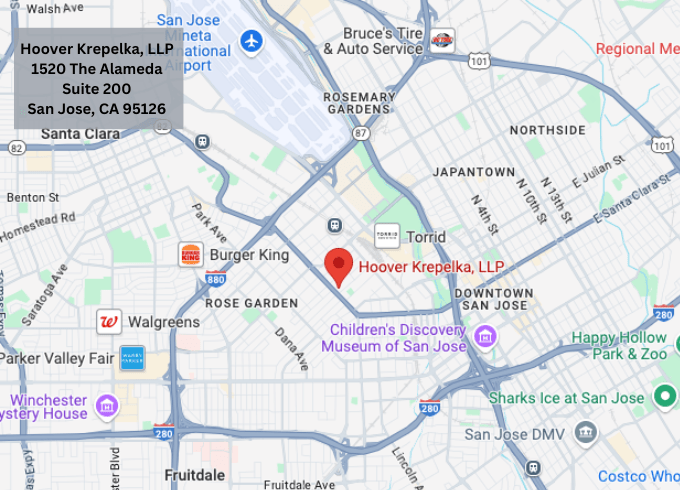We often get questions surrounding the California divorce process and what to expect, so we have decided to explain this process in six steps. We have written much more extensively on each of these steps in other blogs, and we invite you to learn more through them. For now, we want to simply provide a framework of what to expect when facing a divorce in California.
Step 1: Make the decision.
The first step in the California divorce process is to make the decision to start the process. California was the first state to become a “no-fault divorce” state. Previously, a spouse had to prove a just cause for their divorce. That is no longer the case. Believing that each person should have the right to be in, stay in, or leave a marriage according to their own desires, the law now states that a divorce can be based purely on any perceived “irreconcilable differences.”.
Step 2: Meet the residency requirement.
The second step in the California divorce process is to file for your divorce. To file for a divorce in California, at least one of the spouses must first meet two very basic requirements:
- They must be a resident of the State of California for at least 6 months; and
- They must be a resident of the county for at least 3 months immediately preceding the filing of a Petition.
If this residency requirement has not yet been met, the petitioning spouse (the spouse who initiates the divorce) has two options:
- They may simply wait until those requirements have been met;
- They may file for legal separation, where only one spouse must live in California (there is no time requirement).
The process of legal separation looks in many ways like that of a divorce, minus the final, legal dissolution of the marriage. For this reason, some couples who have not yet met California’s residency requirements opt to initiate a legal separation first and then amend their petition later to ask for a full divorce once the residency requirement is met.
Step 3: Initiate the proceedings.
Prepare the paperwork.
The California divorce process includes two forms used in all divorce proceedings:
- Form FL-100: Petition — Marriage/Domestic Partnership. This form is the basic request for a divorce, and requests information about:
- The petitioner and their partner, and whether at least one of them meets the residency requirement;
- Their marriage (date of marriage, date of separation);
- The legal grounds for the divorce request. We mentioned above that since California is a no-fault divorce state, it is not necessary to build a case to support the petition. Only two options are provided as legal grounds:
- “Irreconcilable differences”;
- “Permanent legal incapacity to make decisions.” This option requires medical or psychiatric proof of the second spouse’s inability to make decisions for themselves, including decisions that pertain to the divorce.
- Their children, if any, and what custody and support arrangements they want;
- Spousal support requests;
- Their finances and what assets/debts should be immediately considered separate property versus community property;
- Any miscellaneous requests (who will pay attorney’s fees, name change, etc.).
- Form FL-110: Summons (Family Law). This form is used to announce to the second spouse (called the “respondent”) that a divorce suit has been filed against them. It provides instructions for how and when they must respond. It also includes any restraining orders that have been put in place while the case is being adjudicated. This form must be signed and sealed by the clerk of the court where the case is filed.
If the couple has children together, a third form must also be prepared:
- Form FL-105: Declaration under Uniform Child Custody Jurisdiction and Enforcement Act (UCCJEA). This form requests more information about the children than is included in the main petition, specifically:
- Every address where each child has lived in the previous 5 years;
- Whether other custody proceedings are already in process;
- Whether any domestic violence restraining orders are already in place;
- Whether any other individual, who is not a party to the current divorce proceeding, has any custody or visitation rights that must be preserved.
Other forms may also be required by the particular court in which the case will be filed. It is advised that the petitioner secure competent legal counsel from a divorce attorney who can ensure that all of these local requirements are met.
File the paperwork.
Once all the required forms and supplementary documents have been prepared, the petitioner must then officially file them with the clerk of the Superior Court of their county of residence.
It costs between $435 and $450 to file divorce paperwork, depending on whether there are additional motions that are included with the main petition. If the petitioner already receives public benefits, or is in a low income bracket, or can otherwise show an inability to pay the fee while continuing to support themselves and their dependents, they can also file Form FW-001: Request to Waive Court Fees and, likely, get the fee waived by the court clerk.
Serve the paperwork.
“Serving paperwork,” also called “process serving,” refers to the action of notifying the second spouse that the divorce has been filed and that they need to respond. The respondent spouse is given copies of everything that has already been submitted to the court, as well as a blank Form FL-120: Response – Marriage/Domestic Partnership.
To avoid potential conflicts of interest, the petitioner is not permitted to serve the papers themselves. The process server may be any competent individual who is at least 18 years of age. To avoid the embarrassment of being served, sometimes the respondent will sign a Notice and Acknowledgment of Receipt to acknowledge receipt of the Petition documents.
Once the papers have been successfully served to the respondent, the process server must submit a completed Form FL-115: Proof of Service of Summons with the court. The date on which the process server completes their task is the official start date of the divorce case.
Step 4: Wait for response.
From the day they receive their papers, the second spouse has 30 days to file and servetheir response. They will use the blank Form FL-120 that was included in the service packet. This form is virtually identical to the petitioner’s Form FL-100, and can be used either to agree with or to challenge the claims of the petitioner. Either way, by filing their response, they are agreeing to actively enter the divorce process.
This form also requires a $435 – $450 filing fee, which can also be waived if it would present an economic hardship. And if the second spouse does not respond within the 30 days, the petitioning spouse may request a default judgment, which would allow the case to proceed without the input of the second spouse.
Step 5: Come to an agreement.
This step is usually the most time- and energy-consuming step in the entire divorce process. It is here that after an exchange of financial disclosures (called Preliminary Declarations of Disclosure), all necessary decisions about what the divorce will look like are made. Each divorce is different, but these decisions will typically involve the below categories.
Property division.
California is a “community property” state. With some exceptions, all assets or liabilities obtained during the course of the marriage (defined as the period between the wedding date and the official date of separation) are considered jointly owned – owned by the “community” – and will be divided equally, 50-50, to each spouse. Likewise, assets or liabilities that were obtained before the wedding and/or after separation or by gift or inheritance are considered “separate property” and remain the sole property of the spouse who obtained them.
For smooth property division, both spouses must operate with honesty and transparency. Each spouse must present to the other spouse a declaration of financial disclosure, which accurately lists all of their assets and liabilities. An attempt to hide any financial information is not only subject to a penalty, including jail time, but it needlessly complicates the process and makes it more contentious.
Spousal support.
Alimony is awarded in California based on the economic circumstances of each spouse. It may be not awarded at all, or awarded on a temporary basis, or on a permanent basis. Examples of the factors that are used to determine the type and amount of alimony include:
- The age and overall health of each spouse;
- Their individual earning potential;
- The length of the marriage;
- The lifestyle that was achieved in the marriage;
- The ability of the paying spouse to sustain those payments.
A spouse who would otherwise qualify for alimony may opt out of it, although the courts will seriously look to see if any nefarious influences are behind that decision. The goal is to ensure that both parties emerge from the divorce on a fairly even financial playing field.
Child custody and support.
Generally, within the California divorce process, California prefers to award custody of children jointly to both parents. If there are compelling reasons not to, for instance, if one of the parents tends toward abusive behavior or dependence on controlled substances, legal custody may be granted to the other parent.
When joint custody is granted, in practice, one of the parents typically becomes the primary caregiver. In turn, the other parent may be required to provide financial support to ensure the child is well cared for. There are formulas that are used to determine the minimum child support, although there is nothing hindering the supporting spouse from supporting them more than required.
The process of coming to an agreement on all of these issues is influenced by a lot of complex criteria. If opposing parties are able to work well together, they may be able to arrive at these decisions outside of court and on their own, or perhaps with the help of a neutral mediator. If they are not able to work so well together, then many of these decisions will need to be made by a judge. That latter option greatly increases the time and expense of the entire divorce proceeding.
Step 6: Receive the final divorce judgment.
California has a built-in waiting period of six months between the date papers are served to the respondent and the date a divorce can be finalized. The thought behind that delay is to give the parties an opportunity to cool down and confirm within themselves that they want to go through with the divorce. At any time before the divorce is finalized, the petitioner may halt the process by filing a request for dismissal with the court. The respondent does not have that power.
The actual time it takes to finalize a divorce is usually much longer than those six months. The current average is about 15 – 18 months. While court backlog plays some role in this dilation, the prime contributors are the dynamics of the process of reaching agreements between the spouses.
Once agreements are reached, whether in court or out of court, they must be ratified by a judge. The judge will thoroughly review all paperwork, evidence, and statements to ensure that nothing is left out and that the results are within the boundaries of applicable law. Once satisfied, the judge will sign the final divorce decree, and the divorce will then be legally official and enforceable.
One size does not fit all.
The above steps only reflect the typical way of a California divorce process. There are alternative scenarios or additional steps which may present themselves under certain circumstances. Among other reasons, this is why working with an experienced divorce attorney is advisable. At Hoover Krepelka, our team of lawyers knows the possibilities and which ones will work best in your case. We invite you to contact us today.







